REGISTER DOMAINS
Beginner's Guide to Domain Names
Introduction to Domain Registration, Management, and MaintenanceTable of Contents
 01.
01. Introduction to Domain Names
 02.
02. Domain Registration Process
 03.
03. Understanding Domain Prices & Costs
 04.
04. Domain Protection
 05.
05. Domain Maintenance
 06.
06. Helpful Domain Tools
 07.
07. Using the Dynadot Platform
 08.
08. Frequently Asked Questions
01. INTRODUCTION
Introduction to Domain Names

What are domain names?
A domain name is a human-readable address that serves as a recognizable label to access websites. They make the internet a more accessible place by allowing a unique set of characters to be used in web browsers to take the user to an address, which generates a website's content.
This address is an important concept, as website information and data is stored on a web server with a numerical IP address (e.g. 88.239.44.1). Rather than having internet users manually type IP addresses to access websites, domain names were created to make the process more user-friendly.
To turn a domain name into an IP address, the Domain Name System (DNS) is used. Users can simply type a domain name into a web browser address bar and be automatically taken to the associated IP address without having to type a contextless series of numbers.
Domain names are made up of a top-level domain (like '.com') and a second-level domain (the website's name, such as 'dynadot' in 'dynadot.com'). They play a crucial role in branding, online navigation, and user engagement on the internet while having many different uses.
Domain names vs. web hosting: What's the difference?
For those unfamiliar, it can be confusing that domains aren't connected to a website by default; after all, websites just load when domain names are placed into your address bar, right?
Web hosting is the service that provides the user's browser with the necessary files to load a website once a user enters the domain in the browser address bar. It's completely separate from the individual domain name you search for and register.
How does this fit with the domain name system already mentioned? To help understand the process, let's go through what happens when a user types a domain into an address bar.
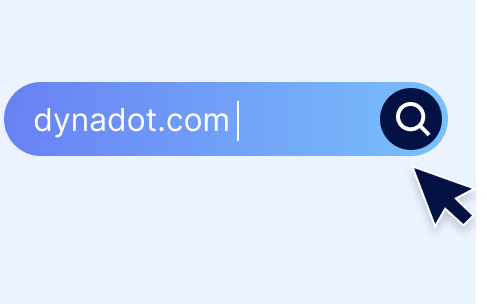
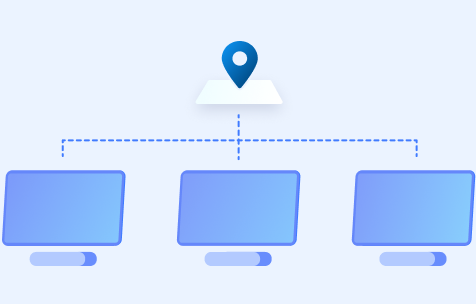
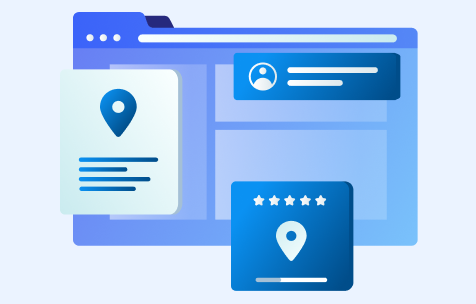

To simplify, the domain name system is responsible for connecting a domain name with an IP address, which is then used to connect to the web server that contains the website's files and assets. Those files are compiled to load the website that users can engage with.
When it comes to web hosting, you can register domains before you've even acquired web hosting. Typically, many domain registrars (websites you can register domain names from) have a tool or service available that includes web hosting with the domain, such as our website builder.
Why domain names are important
Domain names and their many uses

Creating a Website

Build an Online Store

Set up a Custom Email Address

Building a Social Media Presence

Advertising and Promotion

Domain Investing Purposes
Types of domain names
Introduction to TLDs
Top-level domains (TLDs), sometimes referred to as 'domain extensions', come in all sorts of lengths, can each include various meanings, and can represent different things depending on how they're used. With over 2,000 TLDs in total, finding a good fit is key.What are Top-level Domains (TLD)?
A top-level domain is the letter combination that appears after the registered domain. The most recognized and common is '.COM', but there are so many other types to mix and match to fit one's needs. Here are the various other types of top-level domains that you may come across on the web.Understanding TLD Requirements

Premium Domains
Along your domain registration journey, you may come across domains with higher-than-usual prices. These domains often fall into the "premium" domain category, which is where a domain is designated as valuable by the domain registry (organizations that own certain TLDs), which typically means it's a high-quality domain for either brands to use or for domain investors to leverage for their investing strategy.
Domains can be premium for many reasons. One of the most popular reasons being the keyword(s) included in the domain, followed by the brevity of the domain name. The price of a premium domain will vary, usually depending on what the domain name is along with the TLD.

Domain name ownership

Registrations Length

Domain Renewal

Domain Expiration
Domain Name Life Cycle Visualized
 Jan 1st, 2024
Jan 1st, 2024 Jan 1st, 2024 - Dec 31st, 2024
Jan 1st, 2024 - Dec 31st, 2024 Jan 1st, 2024 - Dec 31st, 2024
Jan 1st, 2024 - Dec 31st, 2024 Mar 1st, 2024
Mar 1st, 2024 Jan 1st, 2025
Jan 1st, 2025 Jan 1st, 2025
Jan 1st, 2025 Jan 1st, 2025
Jan 1st, 2025 Jan 31st, 2025
Jan 31st, 2025 Jan 31st, 2025
Jan 31st, 2025 Mar 2nd, 2025
Mar 2nd, 2025 Mar 7th, 2025
Mar 7th, 2025 Mar 7th, 2025
Mar 7th, 202502. PROCESS
Domain Registration Process
Process Overview
Brainstorming your domain name:
Idea generation, best practices, and tools.Selecting your top-level domain:
Tips to help narrow down TLD options.Checking domain availability:
Ways to check and domain availability issues.Selecting your domain registrar:
What to consider when deciding.Domain registration checkout options:
Choices during checkout.Registration complete:
Domain name acquired!
Brainstorming your domain name
Best practices when selecting a domain name

1. Decide on a domain type: descriptive vs. brandable
- sanmateopaving.com
- hotsaucesgalore.com
- californiahomebuilders.com
- frainzers.com
- lizilant.com
- boneez.com

2. Keep your domain short

3. Memorability is king

4. Keep your domain accessible

5. Future-proofing your domain
Tools to help brainstorm
1. Domain name generator tools
2. Keyword research tools
3. Word combiner tools
4. Utilizing AI domain searches

Selecting your top-level domain
Choose the Right Domain Extension for You
While we covered what top-level domains actually are, selecting from the massive list available can be daunting. Looking for alternative TLDs is especially common when your domain of choice is already taken in your preferred TLD. Here are some tips that can help with the TLD selection process.
Checking domain availability
Registering domains that are taken
While this is often a dead-end, start-from-square-one scenario, you still have a few options to check if you're dedicated to one specific domain:
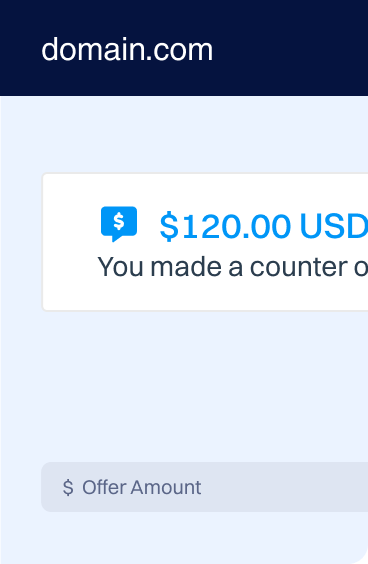

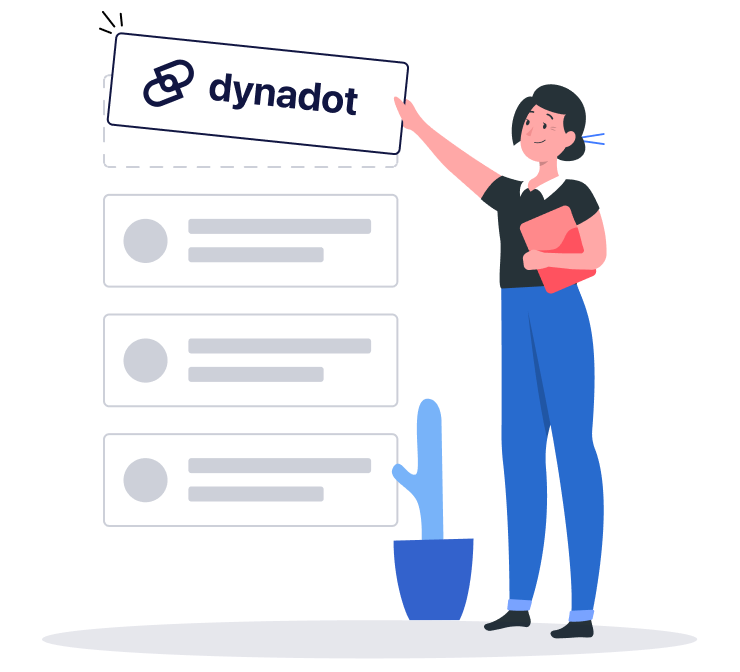
Selecting your domain registrar
What to look for in a domain registrar

Domain registration checkout options

Registration duration

Domain privacy

Website builders


SSL

Registration complete!
Setup your website

If your domain is located separately from your website builder service, you'll need to find the assigned name server settings provided by the website builder hosting service, and apply them to your domain's DNS settings. If unsure, contact the website builder provider for more information.

Park your domain name
03. COSTS
Domain Name Prices
Understanding the cost of domain ownership

Registration cost
Paid upon registering a domain name. Cost increases depending on the number of years the domain is registered for, with 1 year being the minimum and 10 years being the maximum.To save on registration costs, keep an eye out for general sales and promotions, multi-year registration sales (discounts when registering for multiple years at a time) and discount bundles (saving when registering multiple extensions at once).
Renewal cost
Paid upon deciding to keep a domain name under your ownership. The renewal cost can be paid at any point during the domain ownership period, and a variable amount of time after the domain has expired. Typically, domain renewals are more expensive than domain registrations.Why TLD costs vary

Understanding the Registry and Registrar relationship
Like any other business, registrars have overhead they must account for. Employees to manage, offices, accreditation fees - all general expenses that come with running a registrar. Due to this, there is markup that is added by the registrars to actually earn some profit on domains.


Why are some domain prices so low and others so high?
There is a huge variance of TLD prices, and registries consider a lot of factors when it comes to determining their base price, such as: their audience type, industry the TLD may fit into, and how large of a market pool the TLD may have.
Some specific high-popularity domain extensions have their base prices negotiated between ICANN (the regulators of the domain name space) and the registry. On the other hand, newer TLDs don't have this regulation applied, which is also why there is such a large range.

Why do some domains under specific TLDs have a higher price?

Where to register domains at low prices
Registrars vs. Resellers
If you're looking for a bundled deal from a trusted service provider, resellers can be great options. If you're looking for a dedicated accredited brand to register domains from that have robust tool sets specifically tailored towards domains - registrars will be your best bet. You can find a full list of accredited registrars on the ICANN website.
04. PROTECTION
Domain Privacy & Protection
What is domain privacy?
How domain privacy helps

Secure your personal information

Prevent spam

Provides scam protection

Provides peace-of-mind

Consequences of no domain privacy
- Spam emails & phone calls
- Unsolicited marketing
- Information added to sales lists
- Outreach to initiate scams and domain theft
- General unwanted contact
- Undesirable traffic to your domain

Advantages of no domain privacy
Whois Lookup Overview
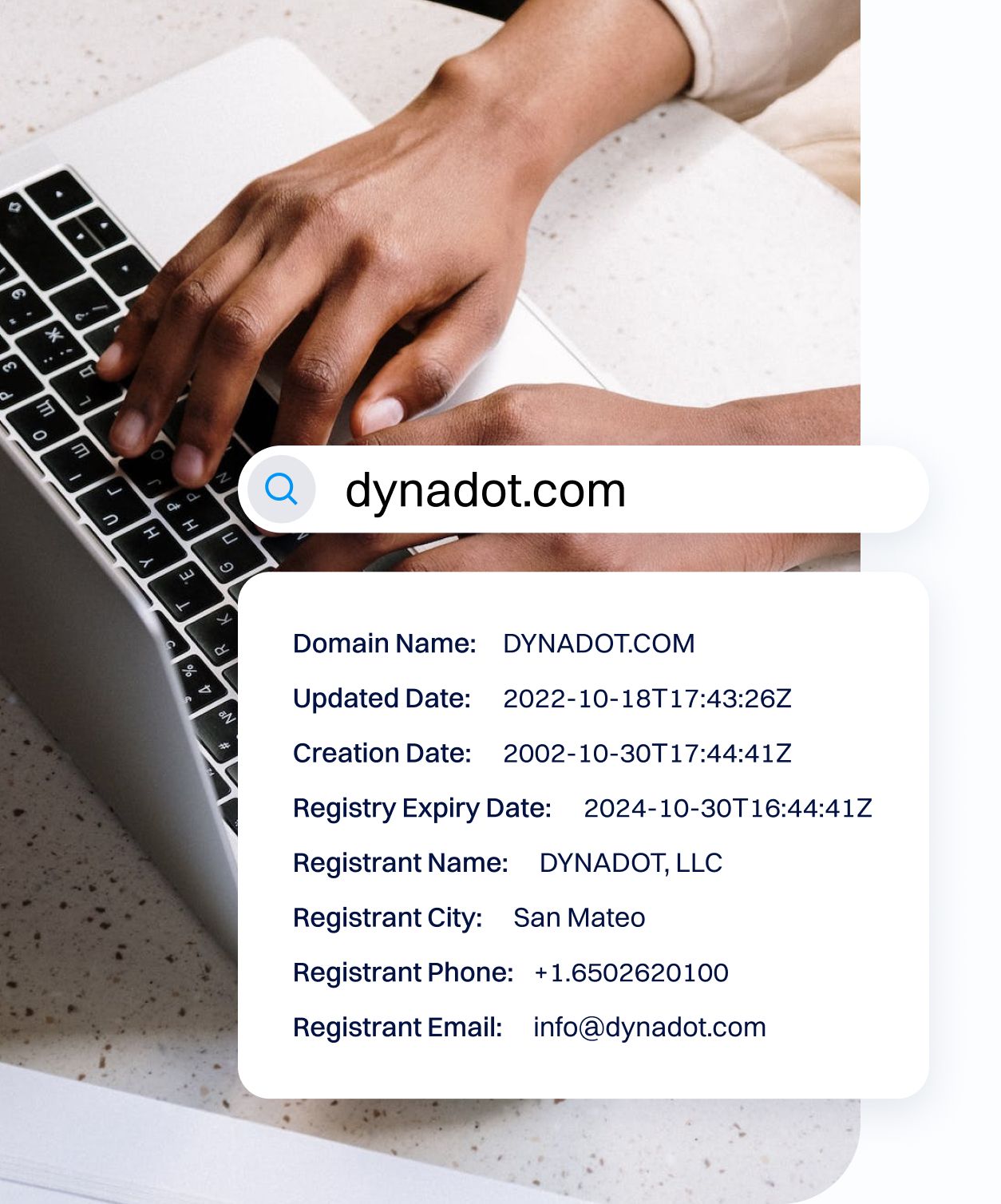
How a Whois Lookup works
The process of collecting and storing registrant contact information is a policy established by ICANN as a means of regulating the internet, connecting an individual with an associated domain name.
Whois Lookup use cases: Why it's important
Availability
Journalism
Legal Reasons
Abuse
Investing
Expiration Monitoring
Network Diagnosis
05. MAINTENANCE
Maintaining Domains After Registration
Domain renewals
What is a domain renewal?
Domain renewals, much like domain registrations, are available for a single-year or multiple-year renewals - allowing you to renew for 1 year or up to a maximum of 10. This flexibility provides owners the option to maintain domains under their control for longer periods, but there is no way to acquire permanent ownership. Understanding and monitoring upcoming expirations to renew accordingly is as close as you get, though there is one step that automates this process.

Auto Renewal
The reason auto-renewal isn't always the perfect solution is that it still requires a valid, up-to-date payment source. Many users will have auto-renewal setup for their domains and simply forget to update their expired payment method, such as their credit card, resulting in the domain proceeding through the expiration process.
Domain transfers
Helpful details about domain transfers:

How to Transfer a Domain
With the details above in mind, let's talk about the actual process of transferring your domain. You can follow the steps listed, but keep in mind that there may be subtle differences depending on where you're transferring your domain from, and where it's going to.Selling domains

Where to sell domains
There are many different aftermarkets that can be used to sell your domain, each with their own unique qualities, including commission fees, user interfaces, methods of selling, payment options, and audiences.
Selecting the right place to list your domain for sale is important, which is why it's recommended to find a platform that provides wide exposure for your domain. Ideally, being able to list your domain on platforms such as Sedo and Afternic can help get eyes on your listings. At Dynadot, you're able to list your domains on our aftermarket, along with on Afternic and Sedo simultaneously.

Determining the value of a domain
If you're struggling with selecting a price, there are appraisal resources and tools online that can help guide you. Dynadot has a domain appraisal that can indicate the approximate value of your domain. Appraisal forums or connecting with domain investors can also help determine the value.
Tips for selling domains

06. TOOLS
Supporting Domain Tools & Add-ons

Research Tools
Tools that let you come up with name ideas or look into the historical data of a domain name can be helpful during the domain selection process.Domain Add-ons

Website builders

Custom email addresses

Domain privacy

SSL certificates

Domain APIs

Grace deletions
Aftermarket Tools
Aftermarket Overview
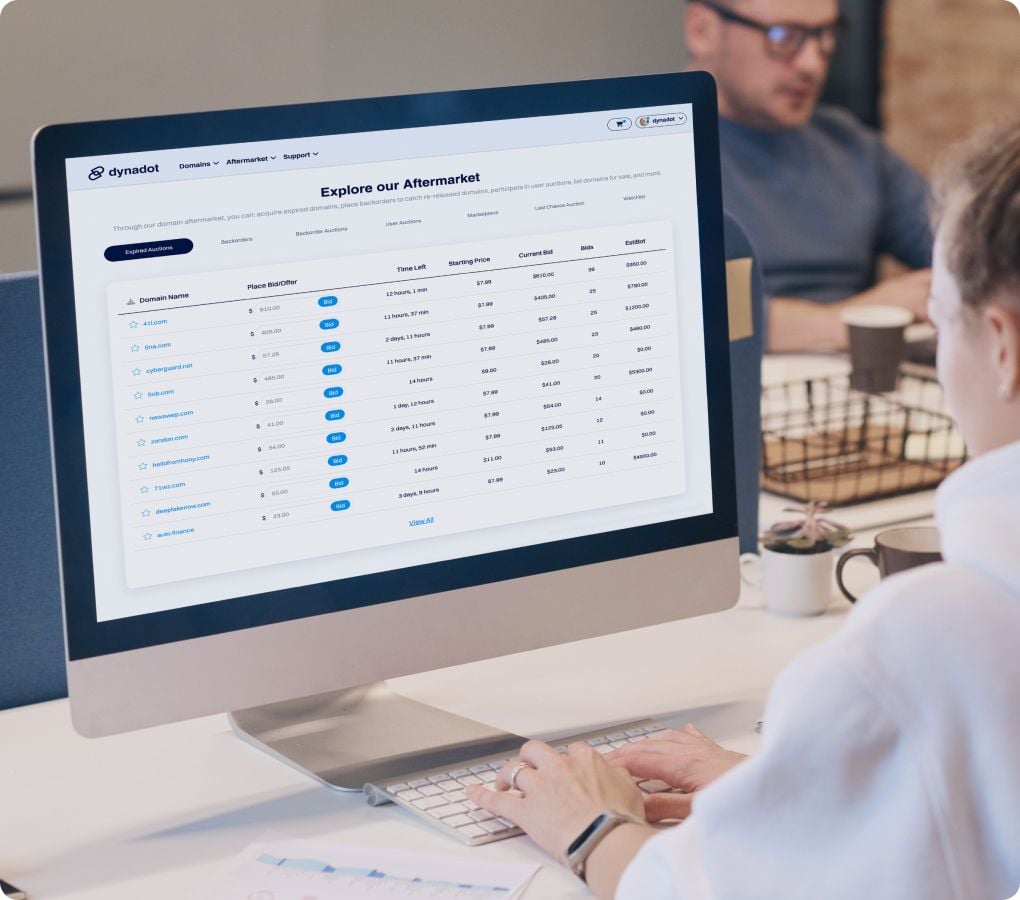
Types of Aftermarket Listings
07. DYNADOT
How to Register and Manage Your Domains
Registering your domains
Introduction to domain control panels
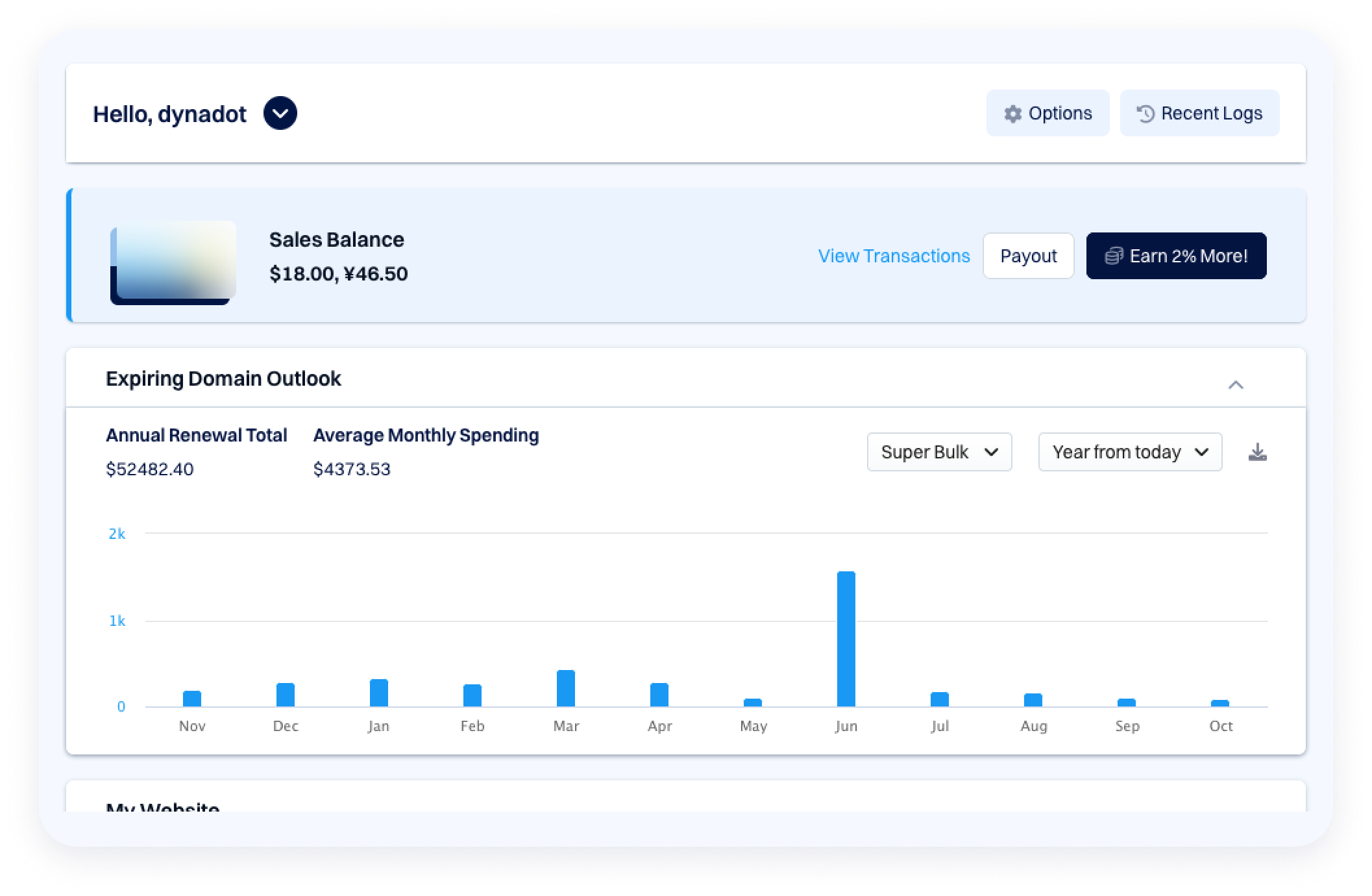
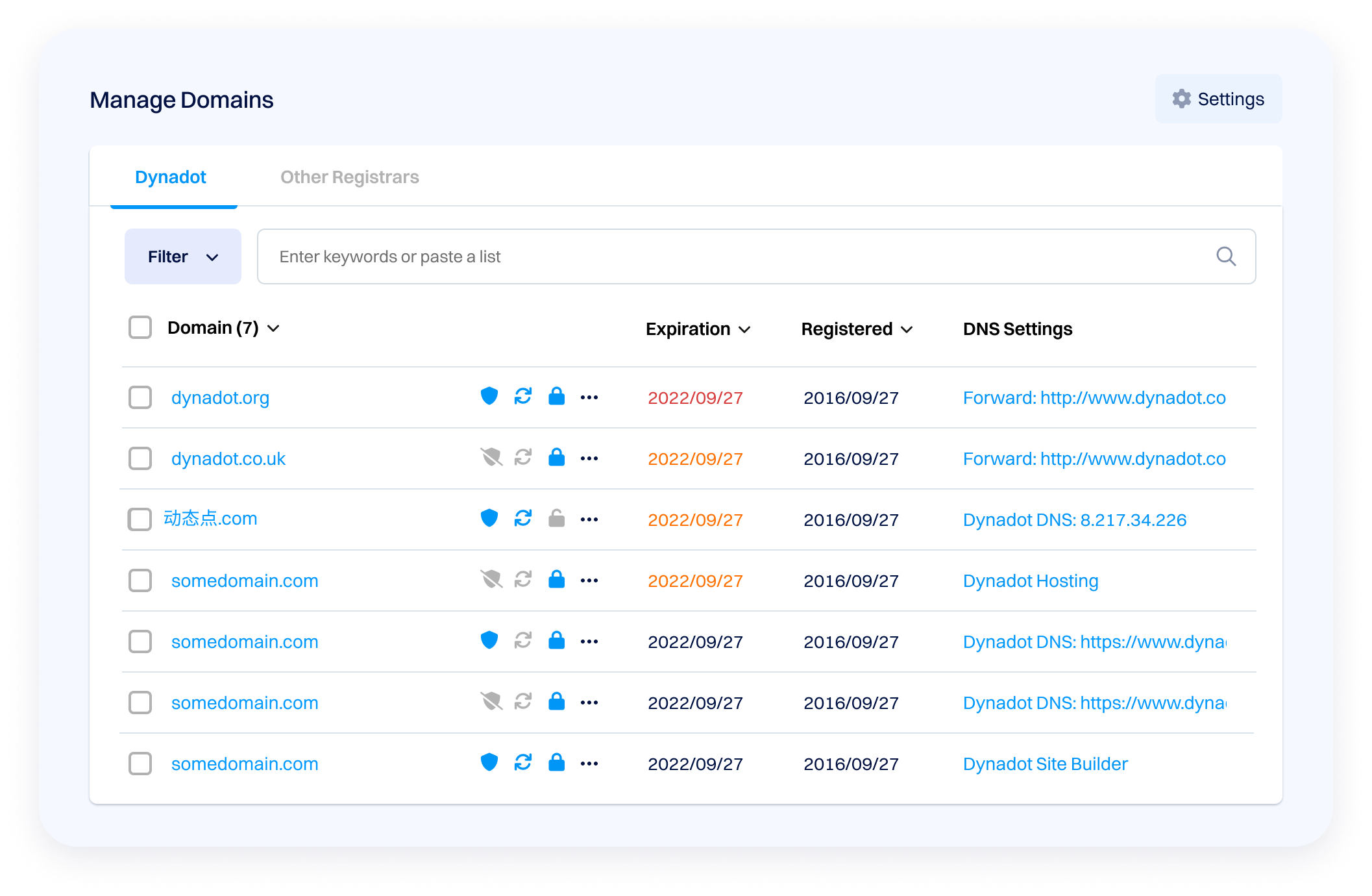
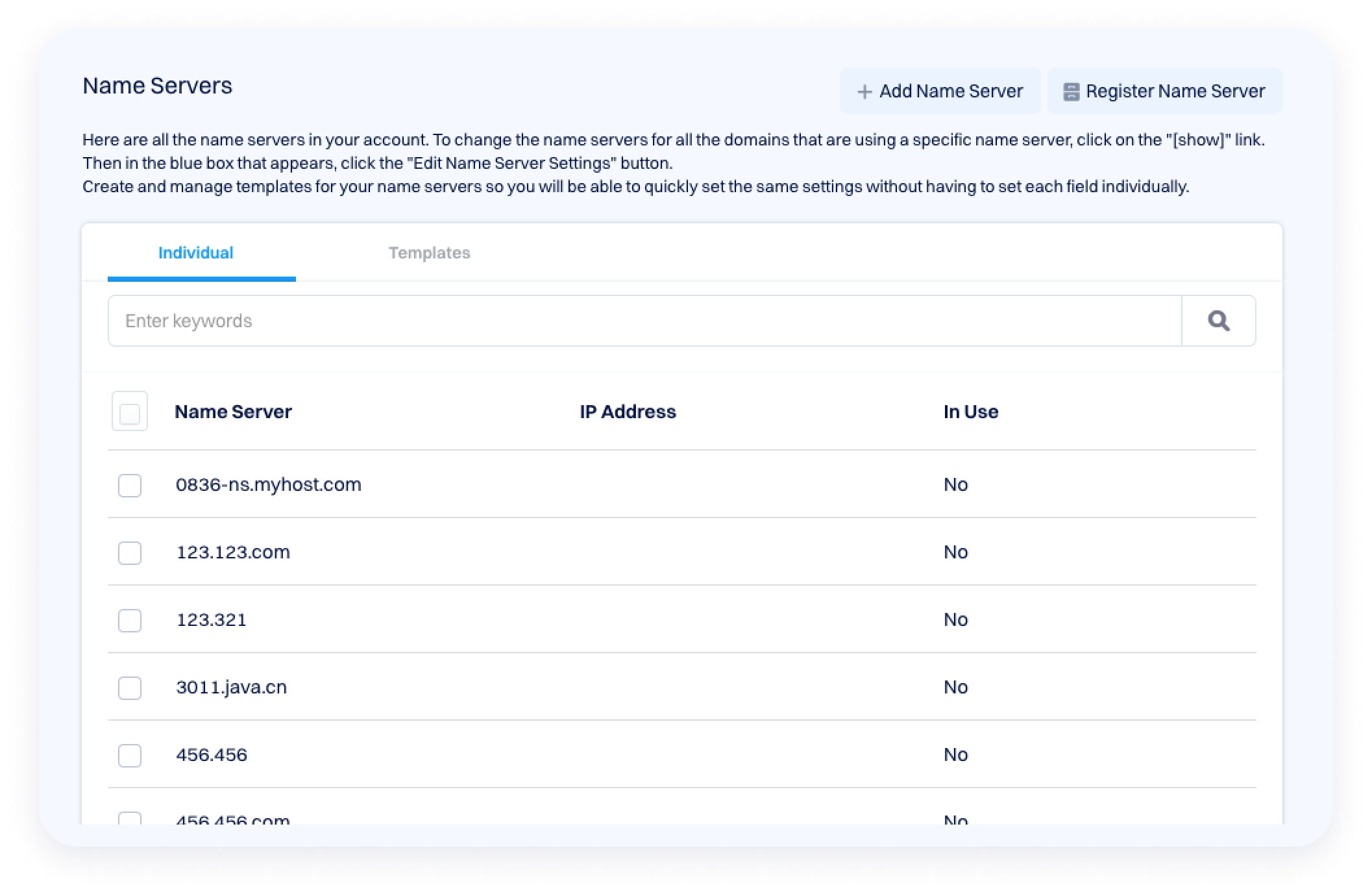

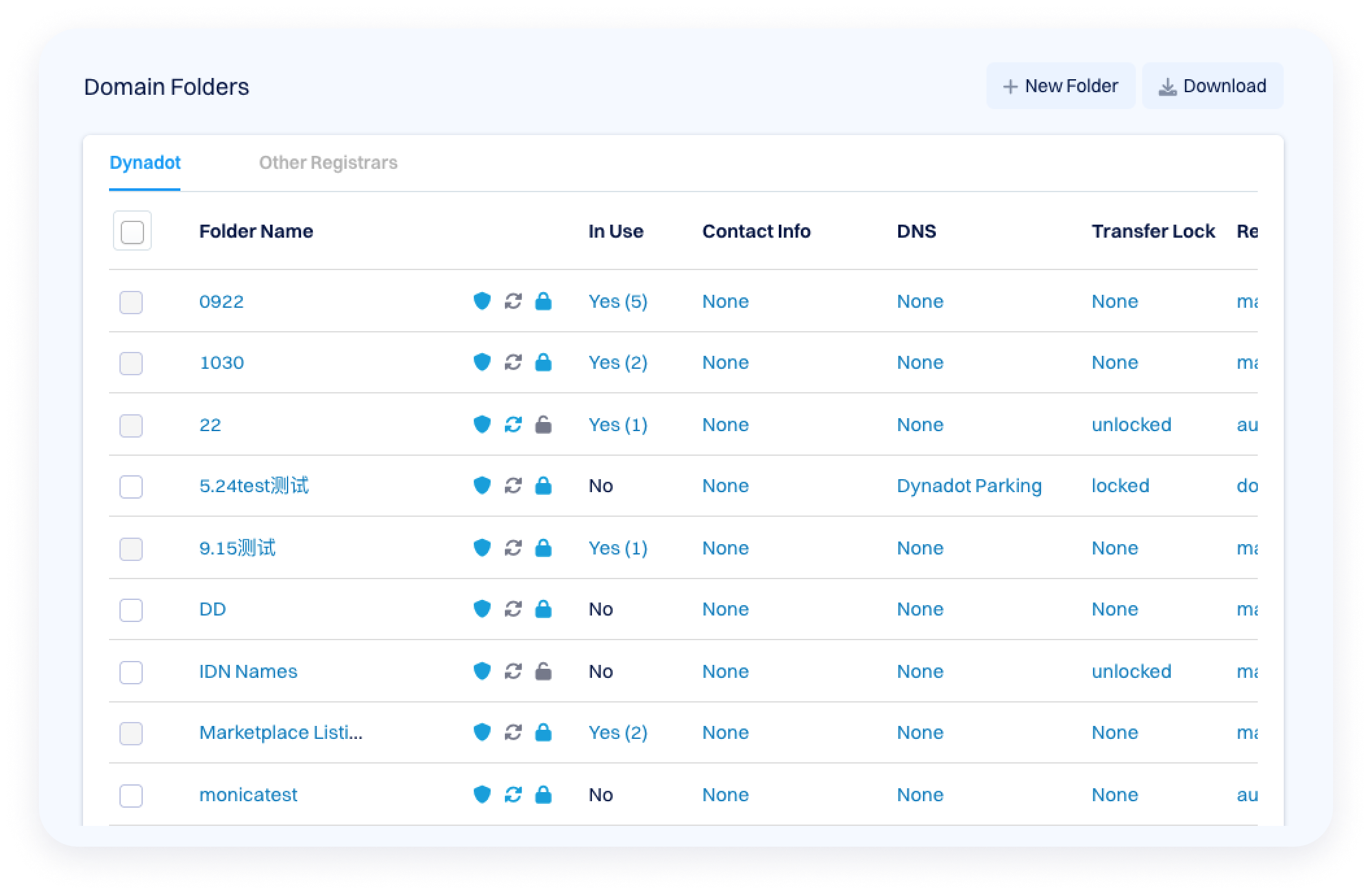

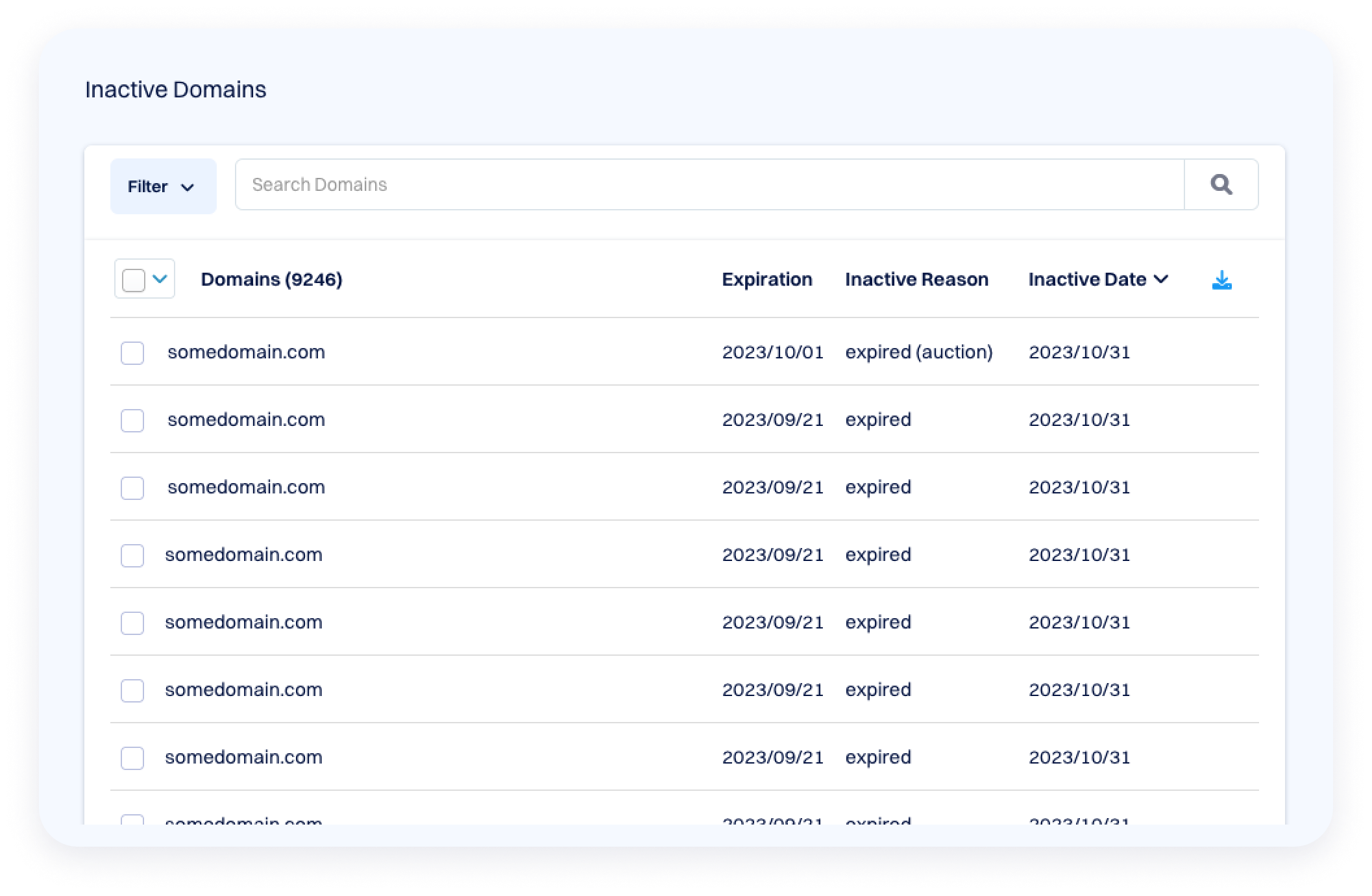
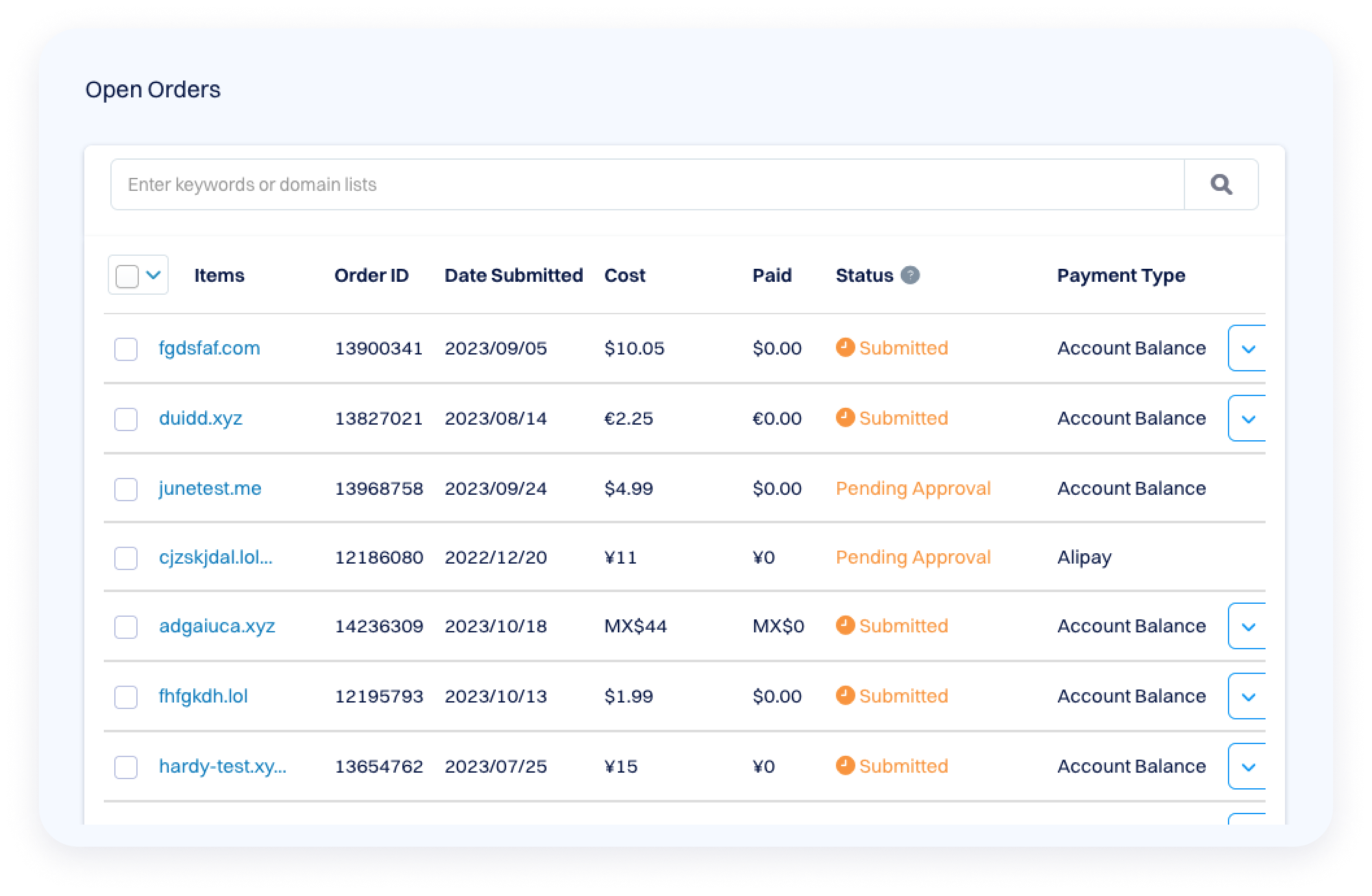
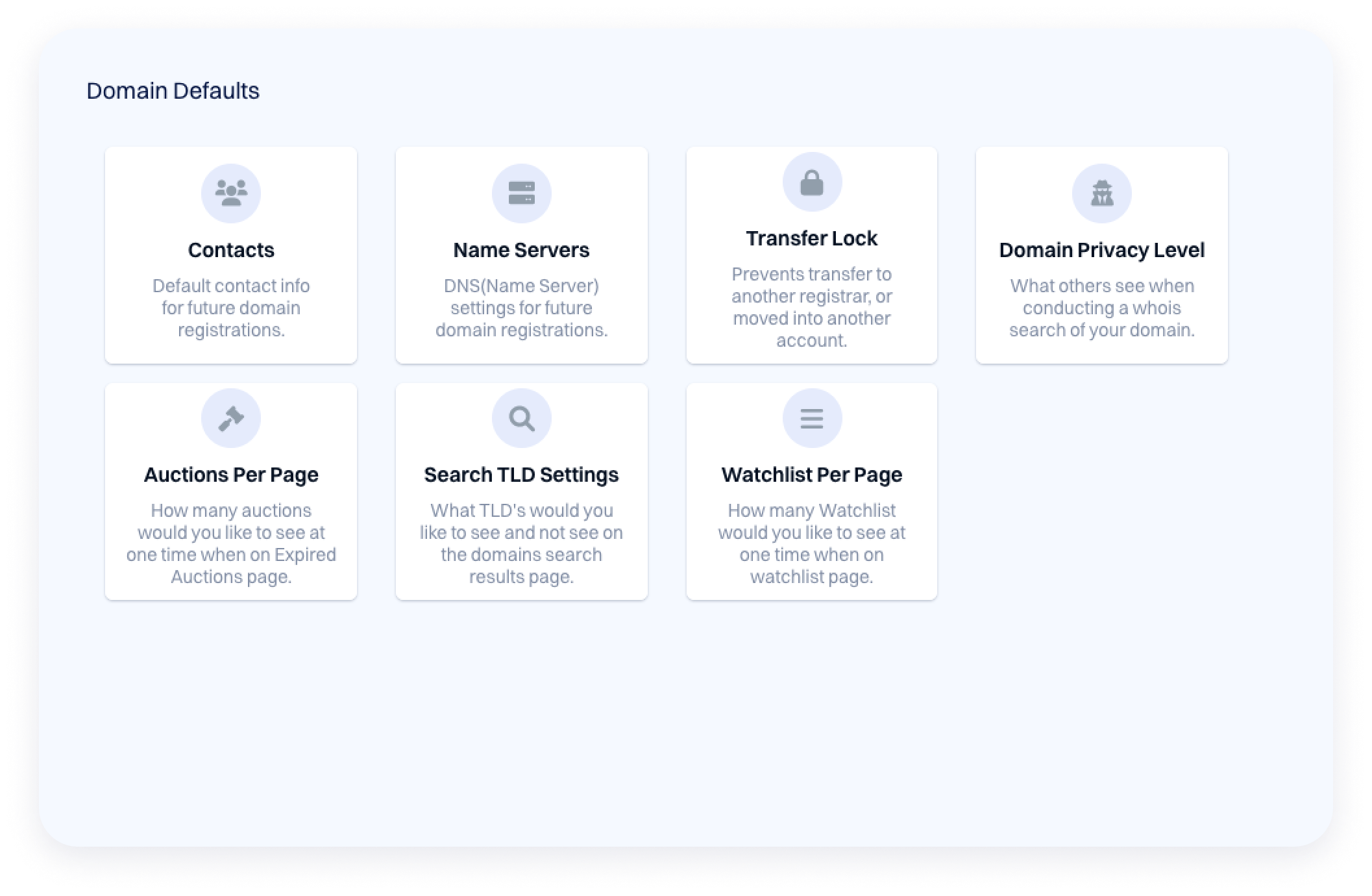
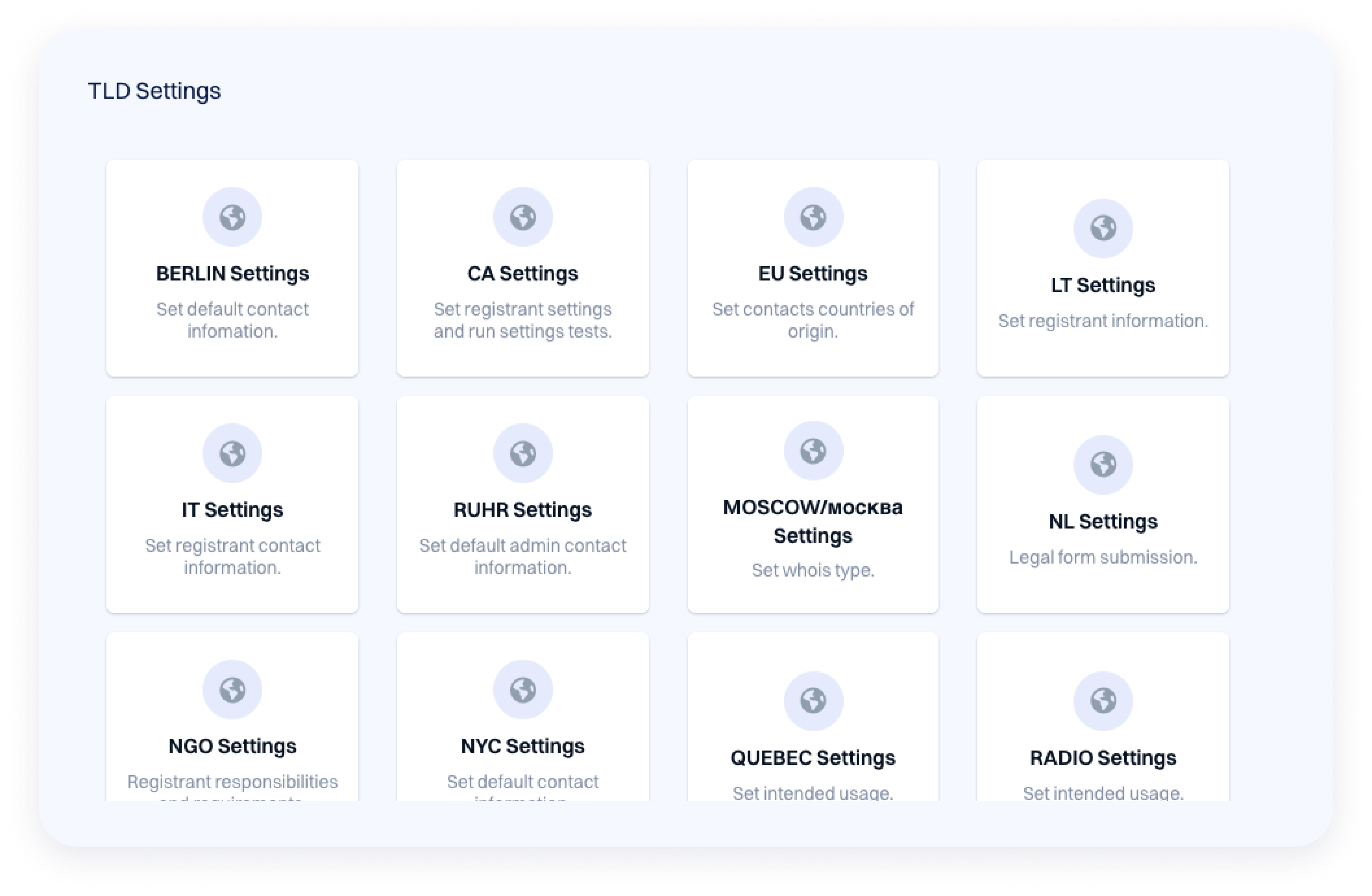
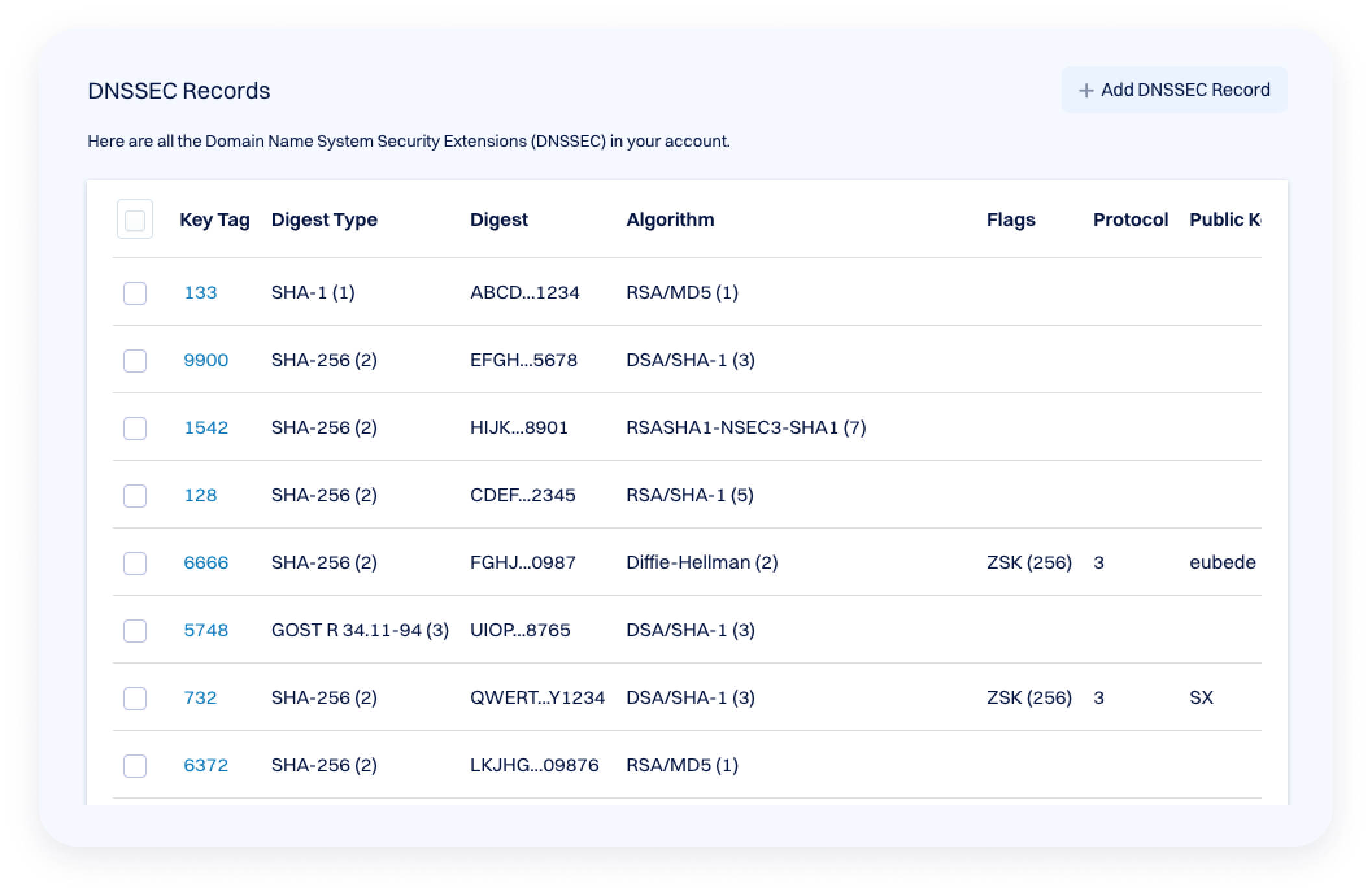
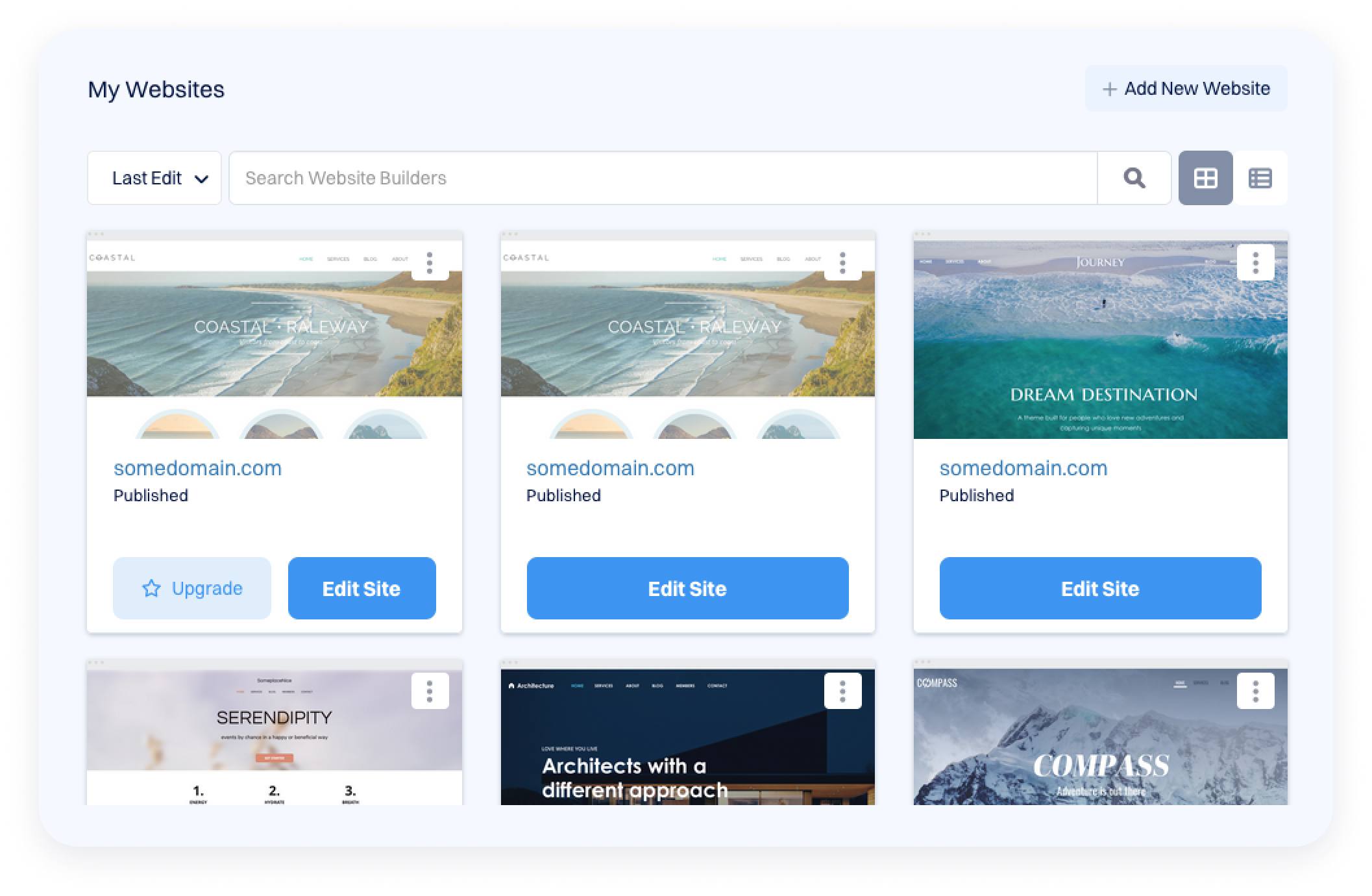

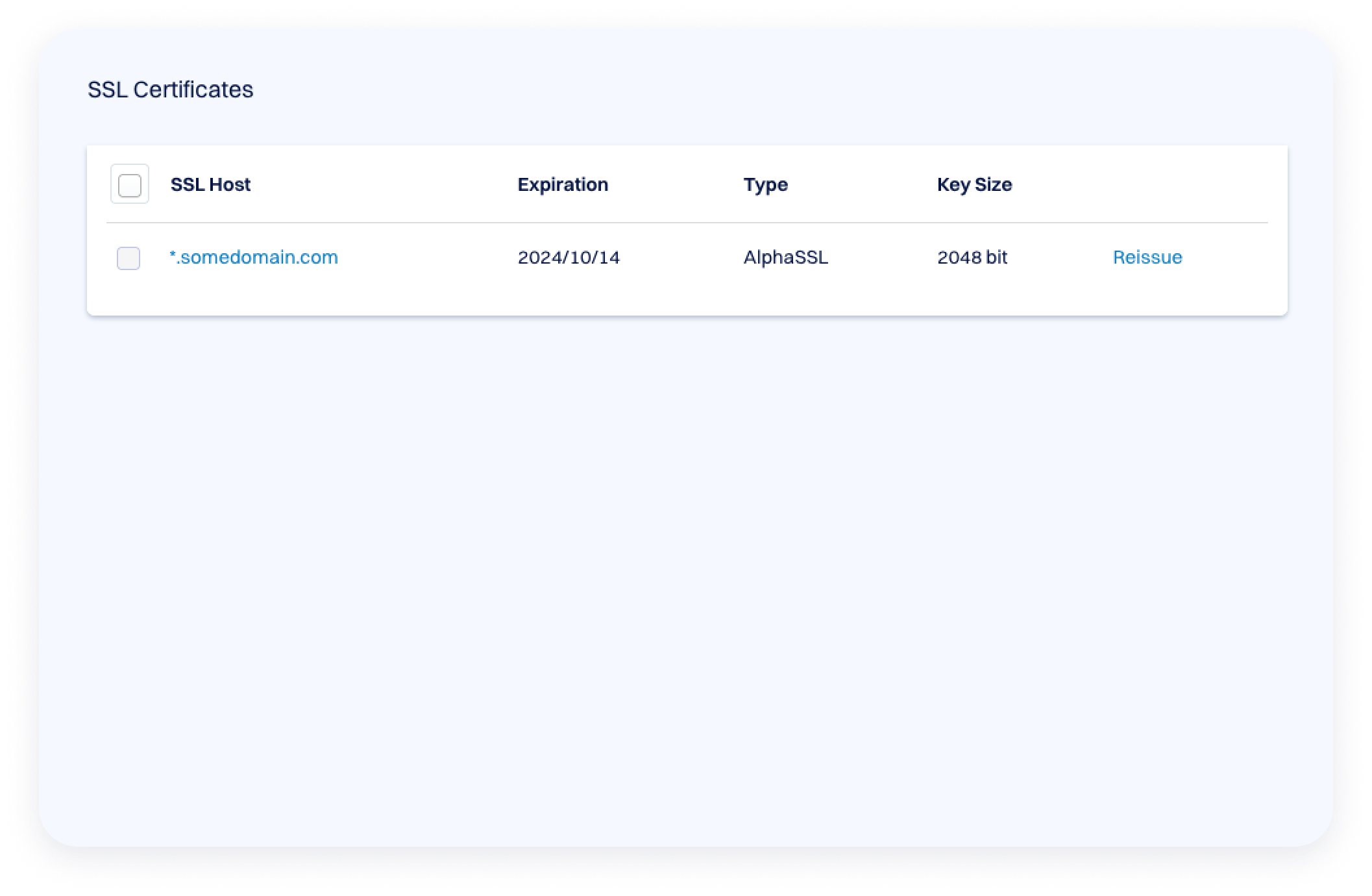
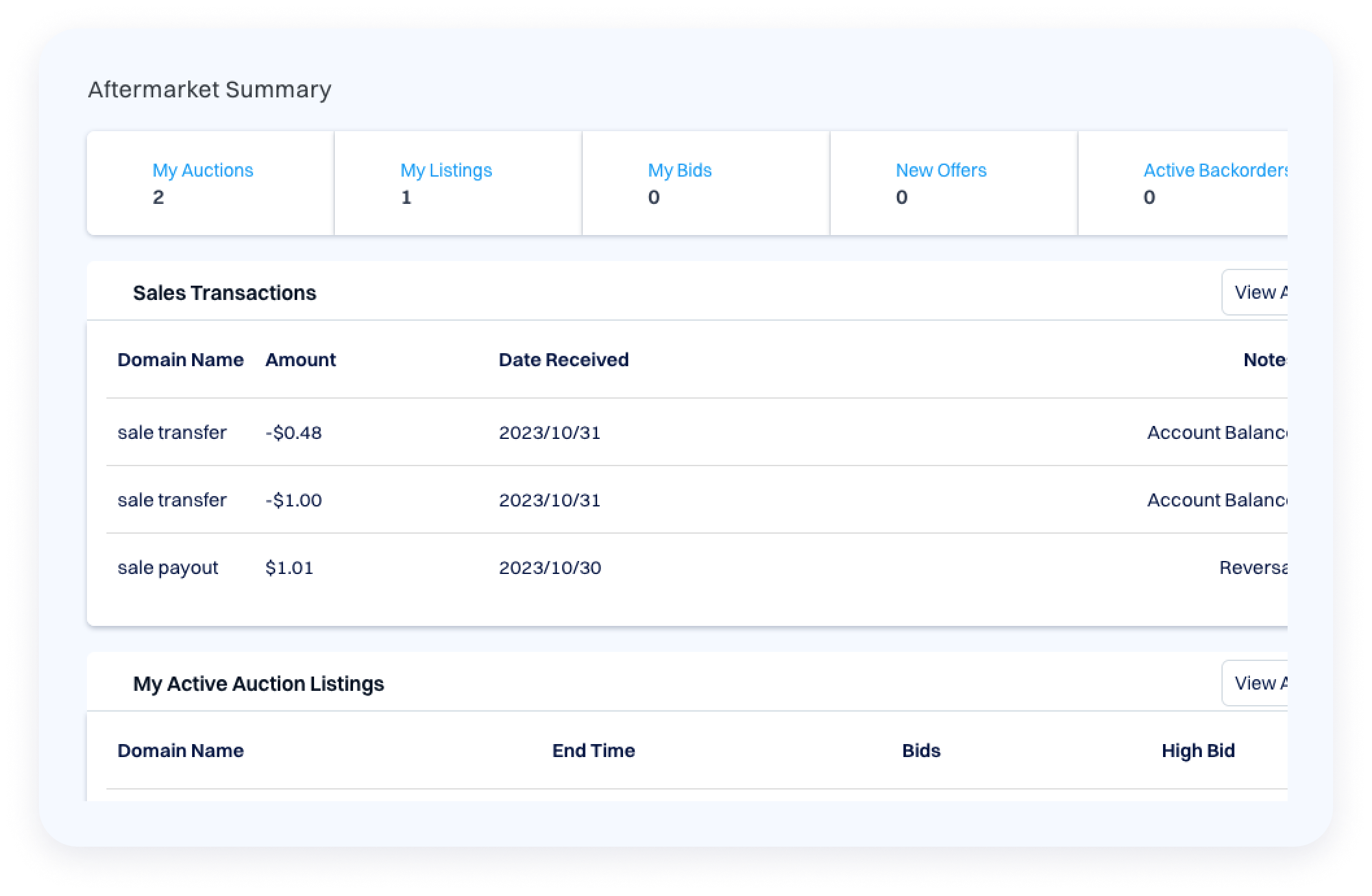
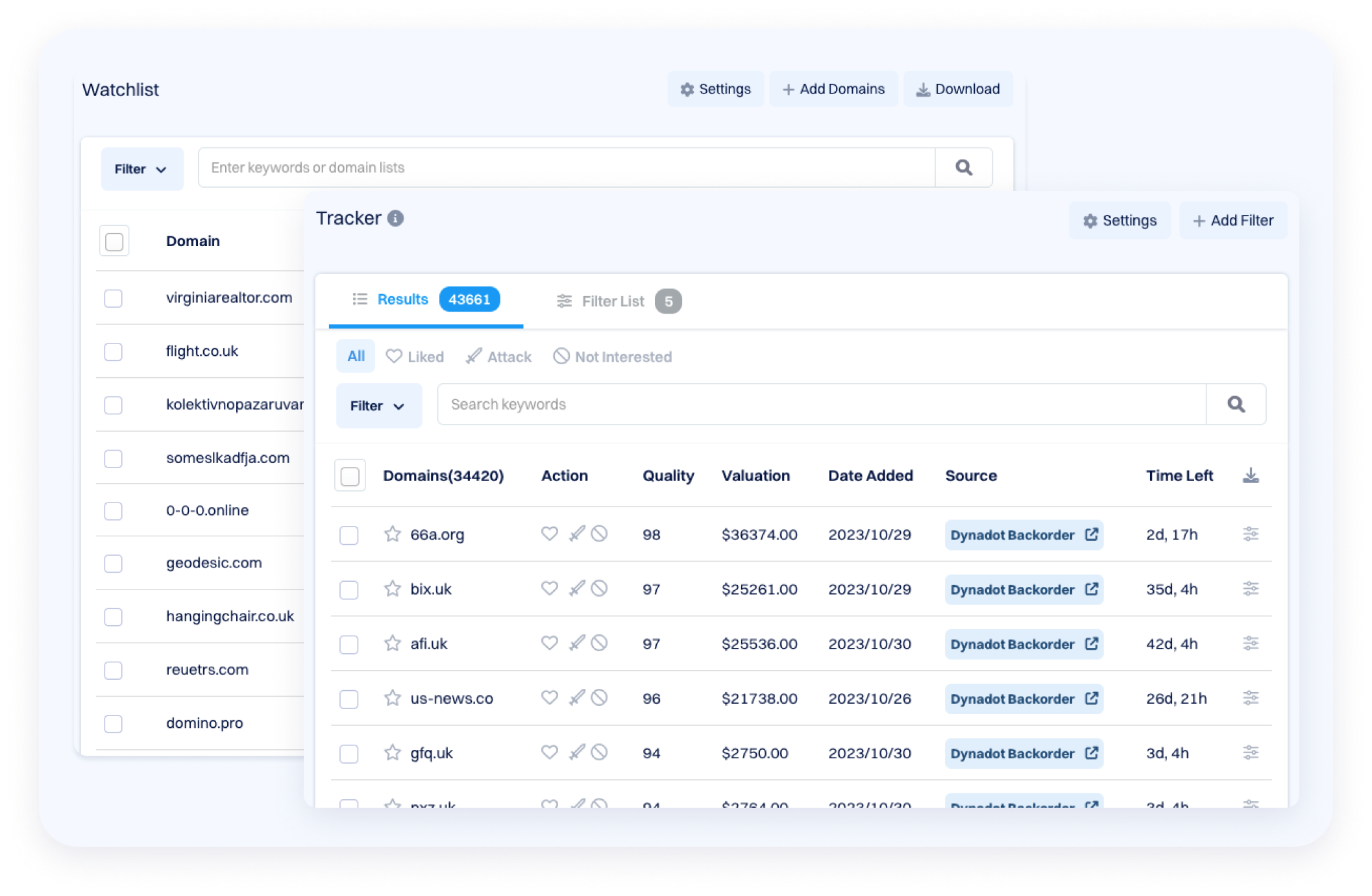
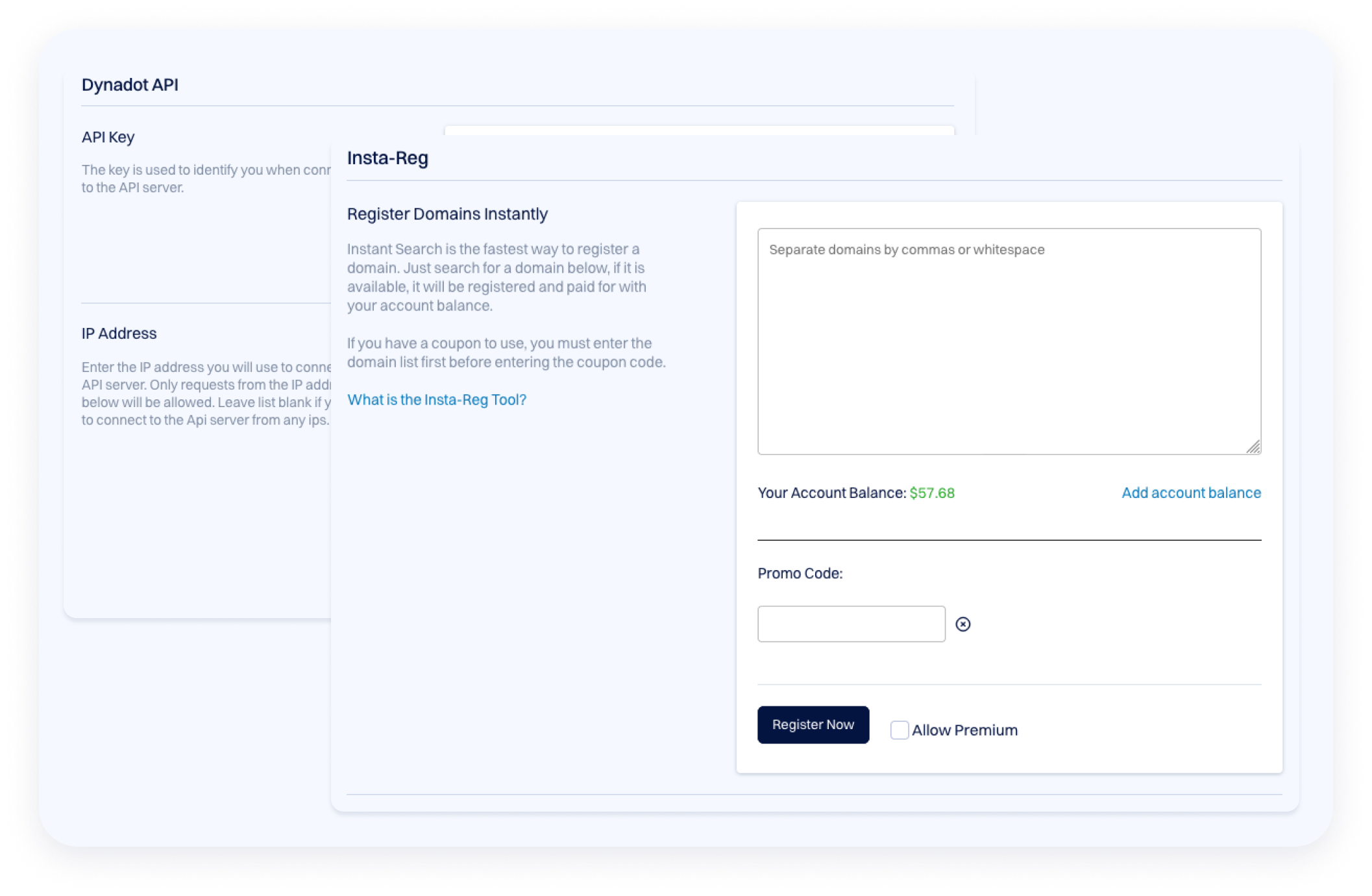
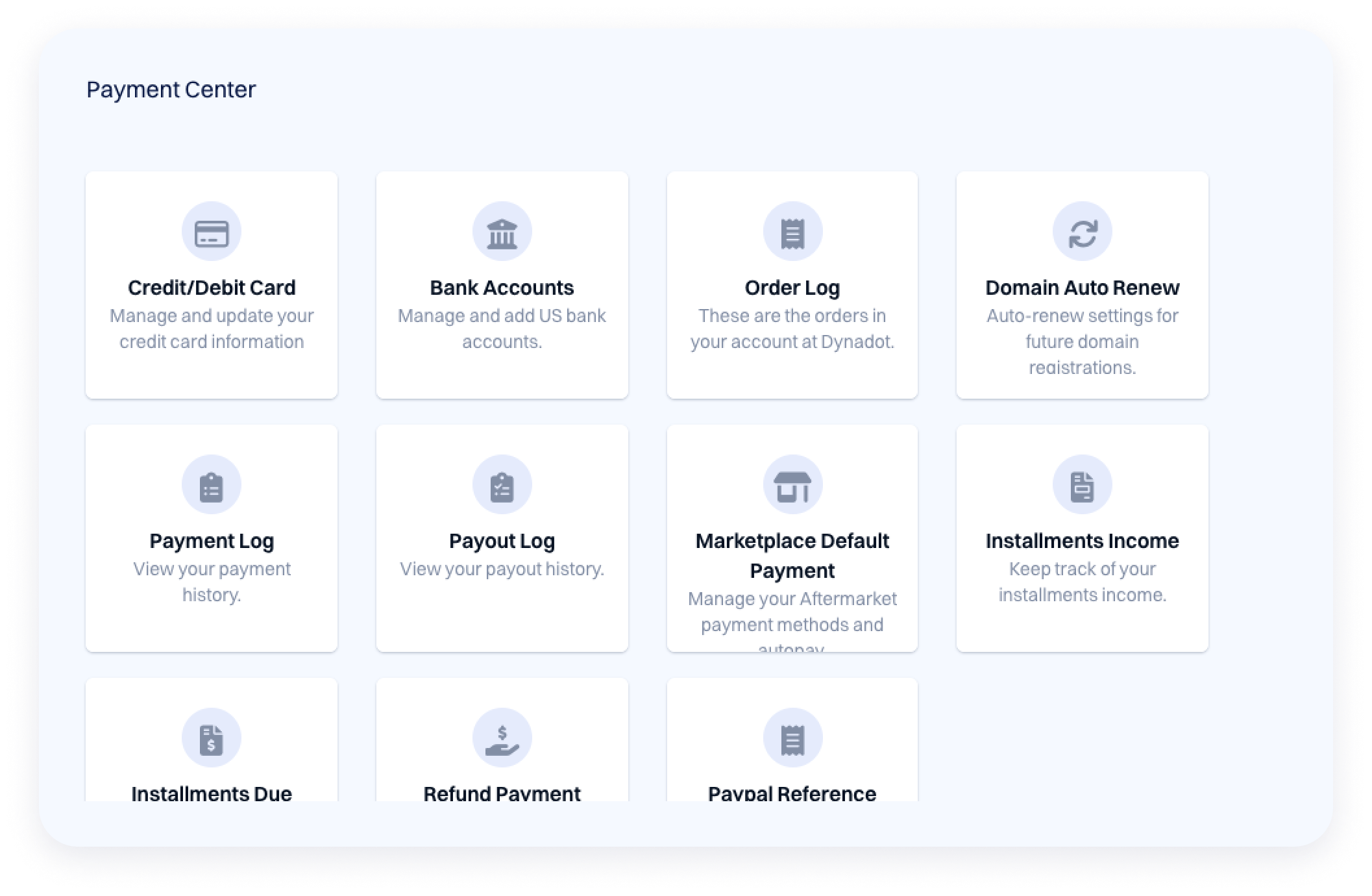
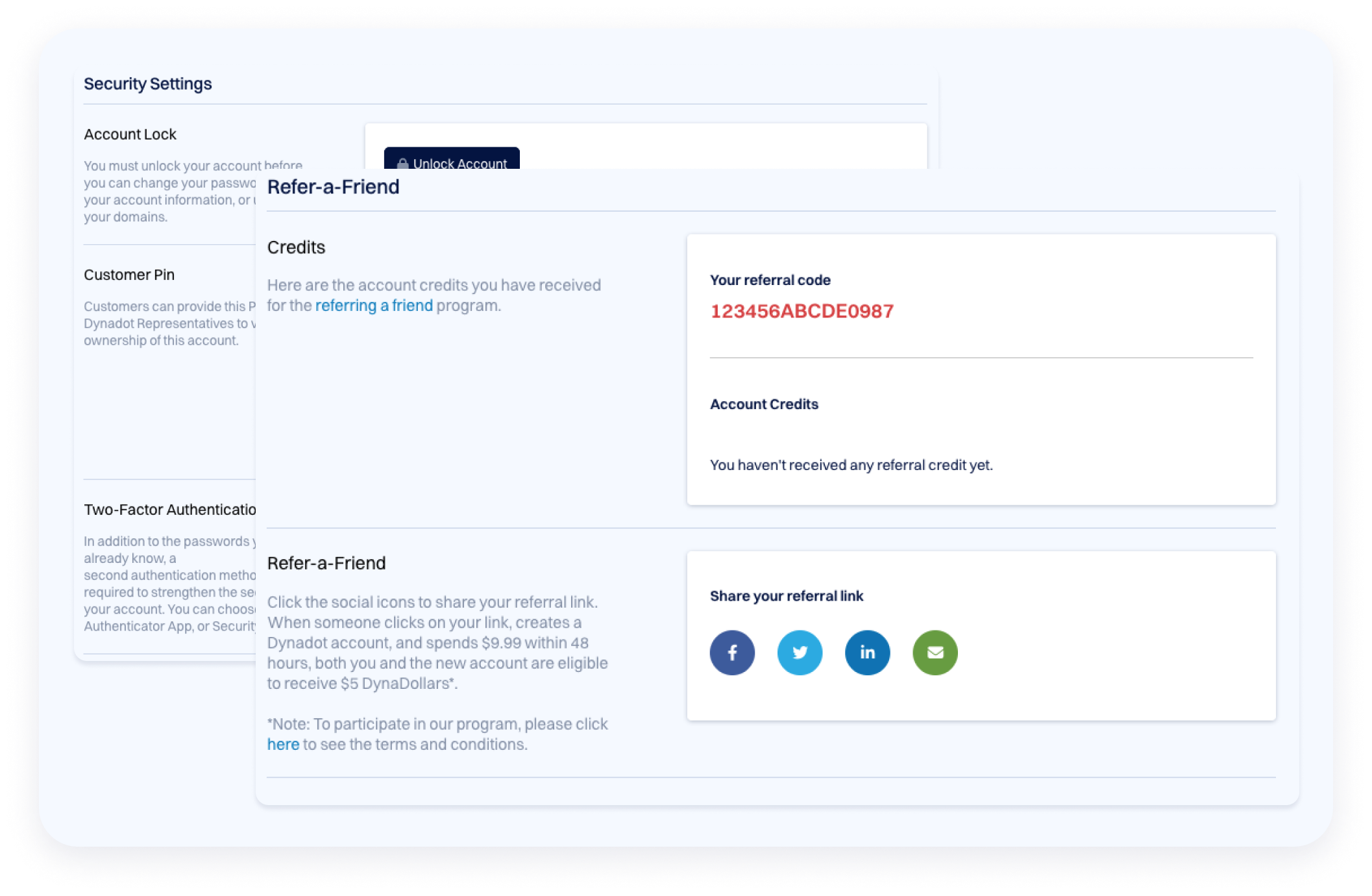
Introduction to the Domain Name System
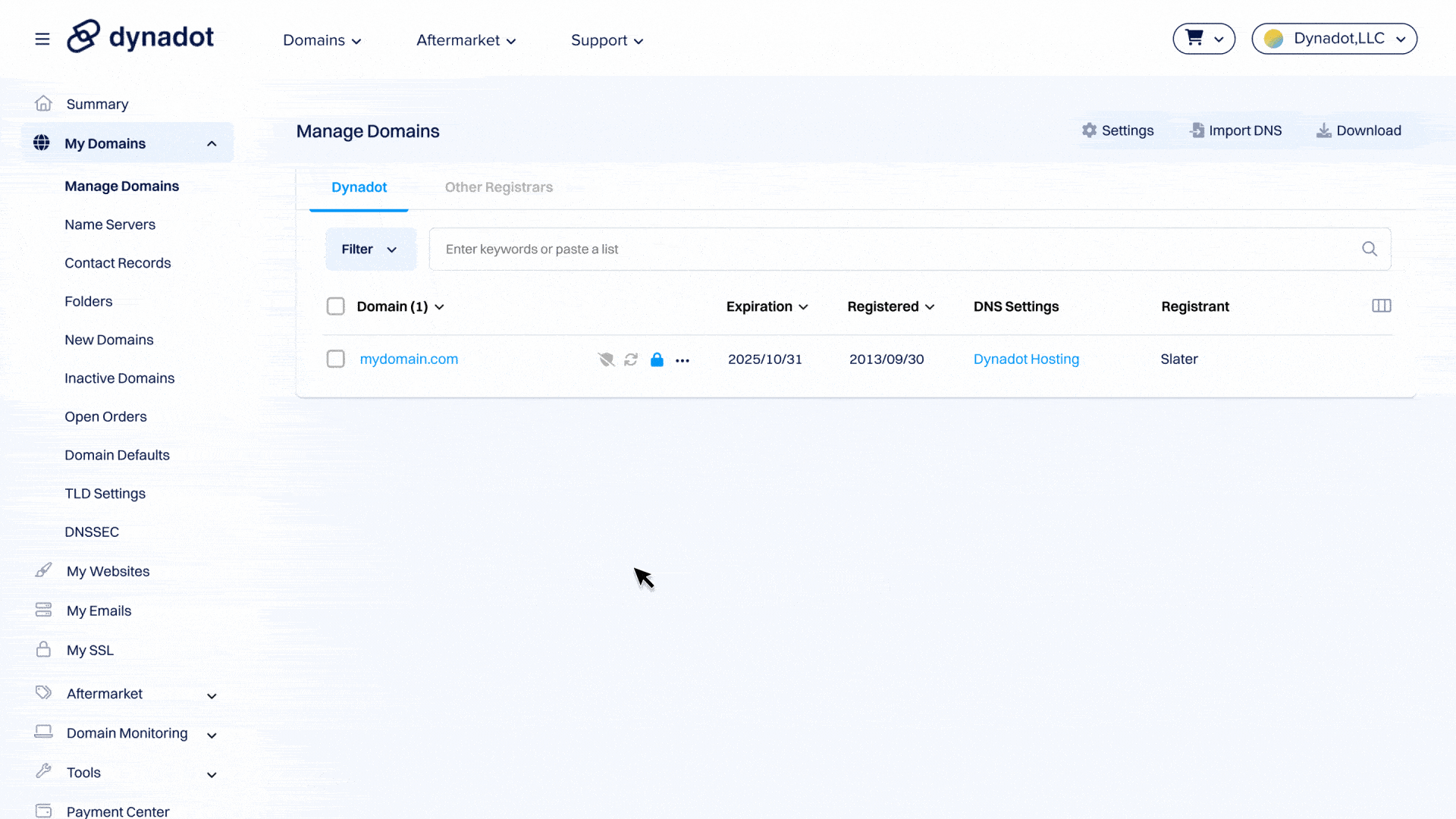
Renewing and transferring your domains

Steps to Renew Your Domains

Steps to Transfer Your Domains
Organizing your domains
Folders



Contact Records & Name Servers
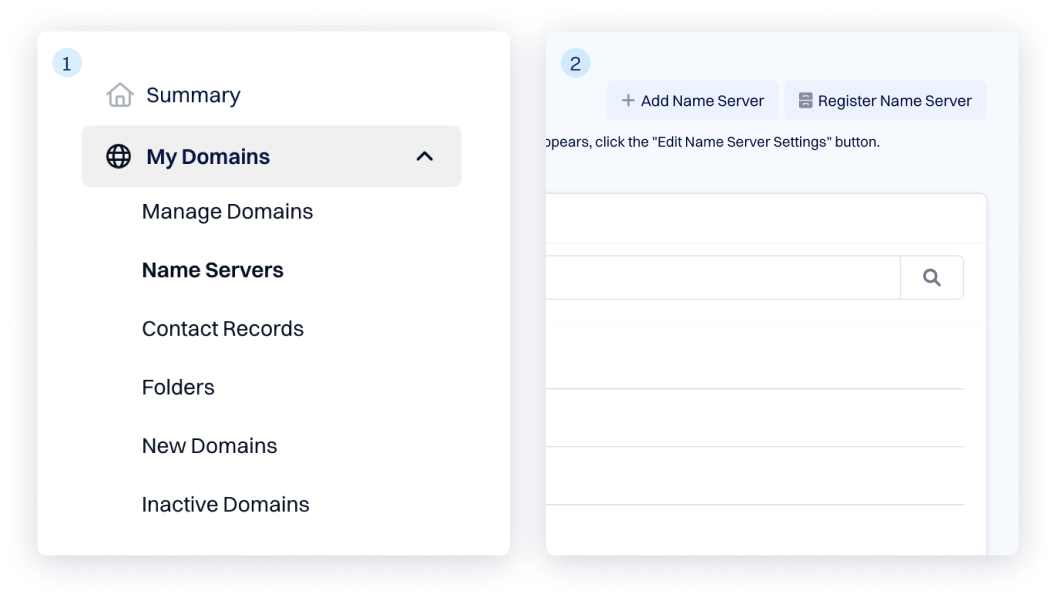

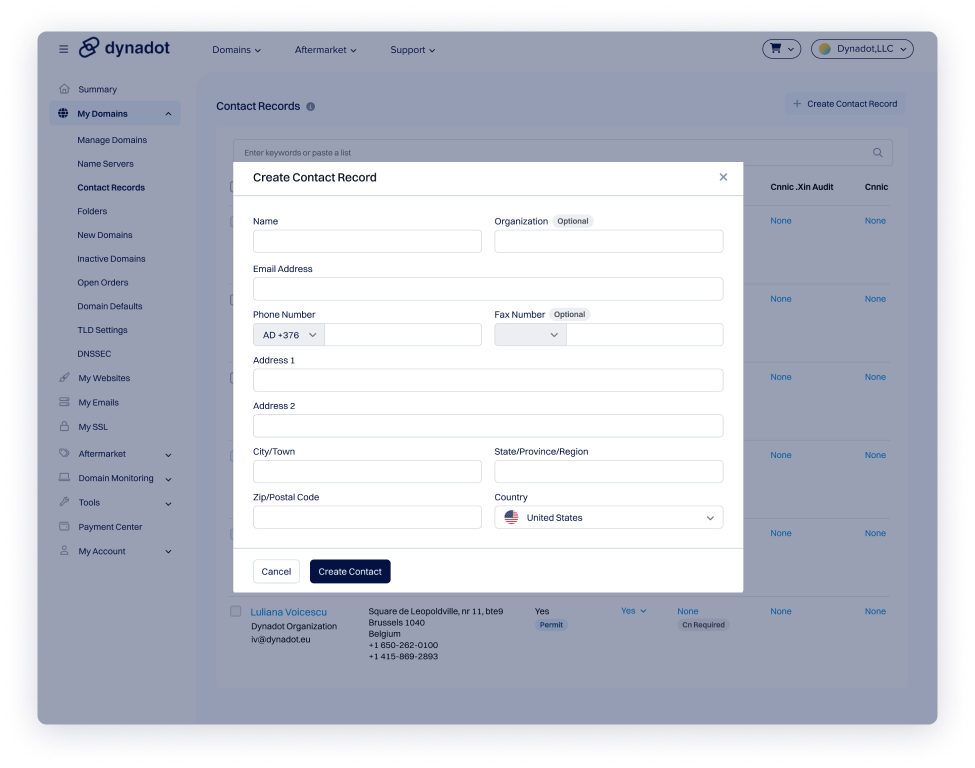
Domain Defaults
TLD Settings
TLDs in this list include: